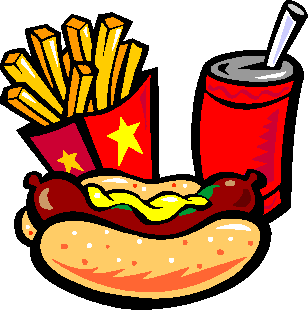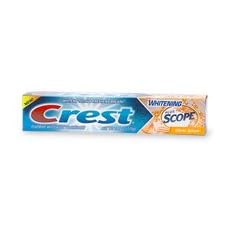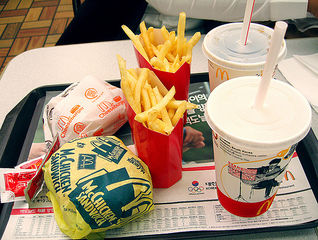
Labels
- Advocacy Project (6)
- Eco-Chic Lifestyle Change (6)
- Eye Openers (6)
- Reflections (3)
- Share and Voice (4)
Sunday, December 18, 2011
Reflection: Week 8-14

Thursday, December 15, 2011
Share and Voice: History Channel

Sunday, December 11, 2011
Advocacy Project: Letter to Elected Official
The only way to determine how much lead is present in the drinking water at your school is to have the water tested and documented. As a health educator, I believe increasing drinking water inspections in schools will result in healthier students, staff, and communities. This will ensure a safe drinking supply in Minnesota’s school systems.
Lead is rarely found in source water, but enters tap water through corrosion of plumbing materials. The most common problem is with brass or chrome-plated brass faucets and fixtures, which can add significant amounts of lead into the water, especially hot water. With the amount of old school buildings still being used, monitoring the contaminants closely is critical to ensure safe drinking water.
Opponents may argue that the cost of increasing inspections is too high. However, by increasing the amount of inspections, we can save money on health care costs. High doses of lead can damage the nervous system, kidneys, and blood system and can even be lethal. It is particularly dangerous for babies and for small children because their bodies and brains are still growing and developing.
The health of students, staff, and community members is very important for the future of our state. Therefore, ensuring a drinking supply that is safe to consume is important for the health and development of our state. Please vote “Yes” to increase drinking water inspections in Minnesota’s schools. If I can provide any further information, feel free to contact me at 111-222-3333. By E-mail at Safewater@school.edu.
Colton Borwege
Monday, December 5, 2011
Advocacy Project: Fact Sheet
What is Lead?
Lead is a toxic material known to be harmful to human health if ingested or inhaled. Lead in the body can damage the brain, kidneys, nervous system and red blood cells.
Who is affected by lead?
EVERYONE! However, children, infants, pregnant women and their unborn children are especially vulnerable to lead.
How does lead affect us?
In children, lead has been associated with impaired mental and physical development, as well as hearing problems. The harmful effects of lead in the body can be subtle and may occur without any obvious signs of lead poisoning.
How does lead get into the school’s drinking water?
Lead enters drinking water from a building’s plumbing system. Lead may be present in various parts of the plumbing system (such as lead solder, brass fixtures, and lead pipes) and is picked up by the water passing through the plumbing system. The amount of lead, if any, in a plumbing system will depend on the age of the system and the materials from which the system was constructed.
How do you know how much lead is in the drinking water?
The only way to determine how much lead is present in the drinking water at your school is to have the water tested. Each tap or fixture providing water for drinking or cooking purposes should be tested for lead at least every five years. Based on the results, action should be taken to replace or repair the water outlets or pipes.
For more information contact the Minnesota Department of Health
Minnesota Department of Health, Section of Drinking Water Protection, 651-215- 0770, www.health.state.mn.us
Minnesota Department of Children, Families, and Learning, 651-582 -8748, www.cfl.state.mn.us
Sources:
Minnesota Department of Health and the United States Environmental Protection Agency
Sunday, November 27, 2011
Eye Opener: Photo Essay








Sunday, November 20, 2011
Advocacy Project: Issue Overview
Problem:
Schools water and water outlets containing lead
This is an amendment to the S-875 Safe Drinking Water Act to require additional monitoring of contaminants and for other purposes.
Whom does the issue affect?
This issue affects students who attend the school and staff that work at the school the most. The school loses due to the money that would come out of the budget to test the water and outlets for contaminants. The students, staff would gain the most knowing they have safe drinking water. The community would also gain from having less health problems due to drinking water. The company that tests the water and water outlets would also gain business from this amendment.
What are the consequences of the issue?
High doses of lead can damage the nervous system, kidneys, and blood system and can even be lethal. Continuous low-level exposure causes lead to accumulate in the body and cause damage. It is particularly dangerous for babies and for small children because their bodies and brains are growing rapidly. These health issues would also cause emotional stress to families and friends. Other contaminants may also cause cancer and reproductive complications. Consequences for society include increased health issues in the community and increased health expenses.

What is the economic impact of this issue?
The economic cost would fall on the school budget would have to cover the cost for the increased monitoring of the water. Which would cut into spending for other things in the school. The economic gain would be increased health and less medical expenses for students, staff, coaches, and other people who use the school’s drinking facilities.
What is the social impact of the issue?
If this bill passes it would result in healthier and happier individuals, families, and communities. Without the worry of contaminants in their drinking water it will relieve stress. The cost of the issue would be less healthy individuals, families, and communities. More emotional stress to individuals, families, and communities due to not knowing if drinking water is safe.
What are the barriers?
The biggest barrier is the financial barrier. You would have to find money to pay for the inspections and money to replace equipment if a problem occurs whether it comes from the government or funded by the school.
Another barrier could be proving to people that this is a serious issue that needs to be dealt with. Some people may think there are better ways to spend the money.
What are the resources?
Some resources we would need are a company to test the water and water outlets. They could then present the results in a meeting open to the school or community to attend. If you held a meeting you could inform people that there is a need for this and figure out the funding for the project.
History of the issue:
Lead is rarely found in source water, but enters tap water through corrosion of plumbing materials. Homes built before 1986 are more likely to have lead pipes, fixtures and solder. However, new homes are also at risk; even legally “lead-free” plumbing may contain up to 8 percent lead. The most common problem is with brass or chrome-plated brass faucets and fixtures, which can add significant amounts of lead into the water, especially hot water. With the amount of old school buildings still being used, monitoring the contaminants closely is important to ensure safe drinking water.
The first Safe Drinking Water Act was born after four years of work by Congress to develop a national program that would ensure the quality of America’s drinking water. For the first time, the 1974 act authorized the U.S. Environmental Protection Agency to set standards for any contaminant in public water systems that adversely affects public health. Passing the proposed bill would further monitor drinking water contaminants to ensure safe drinking water in the schools.
Allies would be the students, staff, and other users of the schools. Other allies would be community members, the company or inspectors that would do the inspecting and repairs of the water system, and also parents who have children that attend the school.
Opponents could be the school, government, or the community depending on where the funding is coming from.
My recommendation:
Please vote “yes” to require additional monitoring of contaminants in schools.
References:
http://www.nesc.wvu.edu/ndwc/pdf/OT/OTw99.pdf
http://water.epa.gov/drink/info/lead/index.cfm
http://www.healthypeople.gov/2020/topicsobjectives2020/objectiveslist.aspx?topicId=12
Thursday, November 17, 2011
Share and Voice: Deer Hunting 2011
 I have been deer hunting every year for the past 8 years. During my time in the woods I have seen many other animals besides deer, including: squirrels, rabbits, birds like owls, eagles, wood peckers, also foxes, porcupines, beavers, woodchucks any probably even more. This year when we walked through the woods to set up our deer stands, the trees were marked for logging. When we got home, we researched to see how much they were logging off and when it was going to take place. It was an eye opening experience to see how much of these animals habitats they were going to log off, not to mention the woods that we have hunted in for 8 years. To think of all the old trees and plants that are going to be destroyed and all the animals that are going to have to find a new home is kind of disturbing. And its all to produce paper and paper products.
I have been deer hunting every year for the past 8 years. During my time in the woods I have seen many other animals besides deer, including: squirrels, rabbits, birds like owls, eagles, wood peckers, also foxes, porcupines, beavers, woodchucks any probably even more. This year when we walked through the woods to set up our deer stands, the trees were marked for logging. When we got home, we researched to see how much they were logging off and when it was going to take place. It was an eye opening experience to see how much of these animals habitats they were going to log off, not to mention the woods that we have hunted in for 8 years. To think of all the old trees and plants that are going to be destroyed and all the animals that are going to have to find a new home is kind of disturbing. And its all to produce paper and paper products.
Sunday, November 13, 2011
Advocacy Project: Healthy People/ THOMAS
- A bill to amend the Safe Drinking Water Act to require additional monitoring of certain contaminants, and for other purposes.
- Last Major Action: NONE
- Status 5/3/2011:
- Referred to Senate Committee Read twice and referred to the Committee on Environment and Public Works.
- Recommendation: Vote: Yes to S-875: Drinking Water Right to Know Act
- My Political Representative: Amy Klobuchar and Al Franken
Friday, November 11, 2011
Share and Voice: Zebra Mussels in MN Lakes
 About two weeks ago, I went to my grandma and grandpa's house near Breezy Point, MN. The live on Lake Ossawinnamakee. About late October/ early November every year I help them take their docks, boats, and swimming raft out of the water for the winter. About 6 or 7 years ago we started noticing little sharp shell shaped objects attached to the docks, boats, and swimming raft. We did some research to find that these were actually an invasive specie know as zebra mussels.(The picture to the right is a cluster of zebra mussels on a native mussel)
About two weeks ago, I went to my grandma and grandpa's house near Breezy Point, MN. The live on Lake Ossawinnamakee. About late October/ early November every year I help them take their docks, boats, and swimming raft out of the water for the winter. About 6 or 7 years ago we started noticing little sharp shell shaped objects attached to the docks, boats, and swimming raft. We did some research to find that these were actually an invasive specie know as zebra mussels.(The picture to the right is a cluster of zebra mussels on a native mussel)
Sunday, November 6, 2011
Advocacy Project: My Political Representatives

President:
The White House
1600 Pennsylvania Avenue NW
Washington, DC 20500
Mark Dayton Democrat
Office of the Governor
130 State Capitol
75 Rev. Dr. Martin Luther King Jr. Blvd.
St. Paul, MN 55155
Phone: 651-201-3400
Amy Klobuchar US Senate, Democrat
302 Hart Senate Office Building
Washington, DC 20510
Phone: 202-224-3244
Al Franken US Senate, Democrat
Duluth Office:
515 W 1st St
Suite 104
Duluth, MN 55802
Phone: (218) 722-2390
Duluth Office: Gerald W. Heaney Federal Building and United States Courthouse
515 West First Street, Room 235
Duluth, MN 55802
Phone: (218) 740-7803
100 Rev. Dr. Martin Luther King Jr. Blvd.
Saint Paul, Minnesota 55155
651-296-7065 or 800-920-5887
100 Rev. Dr. Martin Luther King Jr. Blvd.
Saint Paul, Minnesota 55155
651-296-8872
Capitol Building, Room G-24
St. Paul, MN 55155-1606
651.296.1279
Capitol Building, Room 120
St. Paul, MN 55155-1606
651.296.4837
cnickolay@ci.new-prague.mn.us
Wednesday, November 2, 2011
Reflection: Week 1-7

Monday, October 31, 2011
Eye Opener: Junk on the Brain
Tuesday, October 25, 2011
Eco-Chic Lifestyle Change Week 5: Final Review and Overall Reflection

Sunday, October 23, 2011
Eye Opener: Environmental Working Group
 The product I chose to evaluate was Crest Whitening plus Scope Citrus Splash Toothpaste. I usually use Crest toothpaste but I switch up the flavors or try different kinds every time I buy new toothpaste. I am evaluating the toothpaste that I currently am using now. There are a few minor concerns with this toothpaste.
The product I chose to evaluate was Crest Whitening plus Scope Citrus Splash Toothpaste. I usually use Crest toothpaste but I switch up the flavors or try different kinds every time I buy new toothpaste. I am evaluating the toothpaste that I currently am using now. There are a few minor concerns with this toothpaste. Tuesday, October 18, 2011
Eco-Chic Lifestyle Change Week 4: Weekly Update

1. My SMART Goal: I will eliminate all paper products including napkins, paper towels, paper plates, and paper cups from my lifestyle. Also eating at fast food only one time per week.
